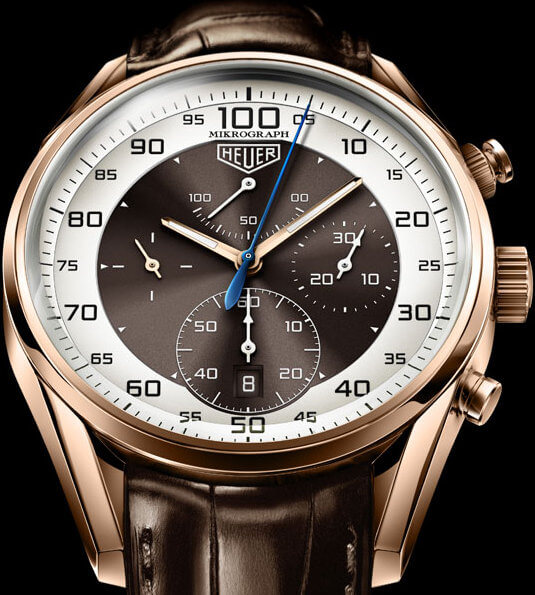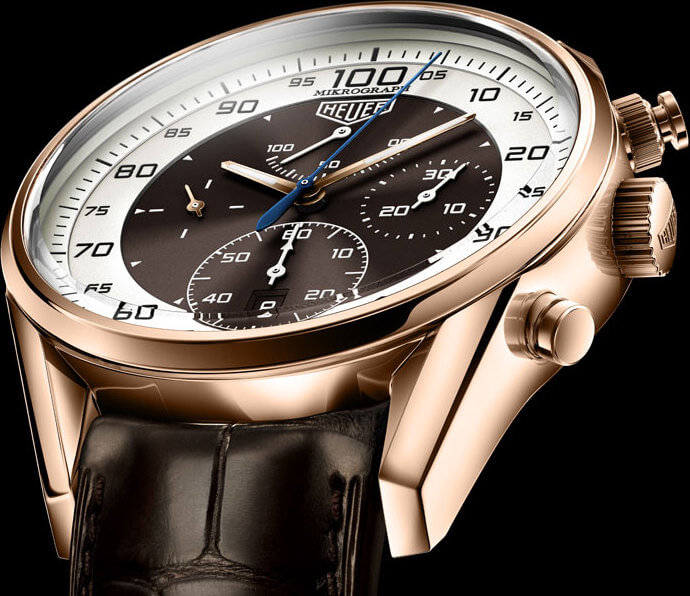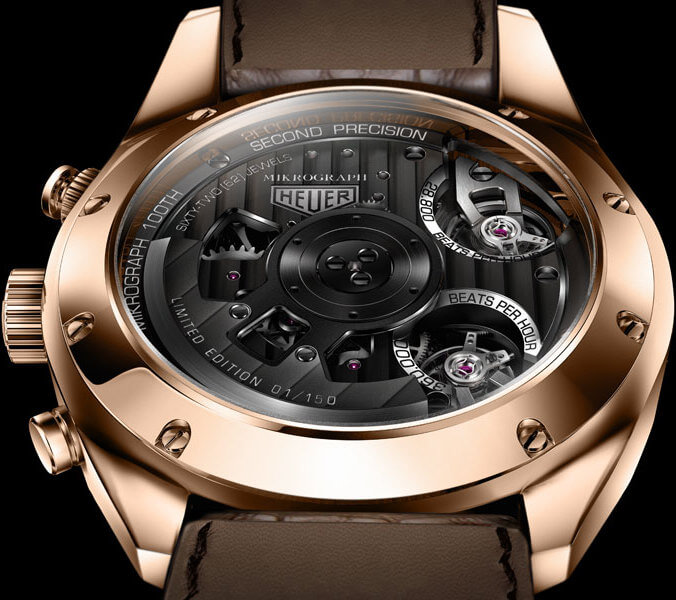So you thought mechanical chronometers – the kind PE teachers wore around their neck – were now museum pieces, kicked out of a job by electronic timers that can measure 12 athletes simultaneously to one billionth of a second. Well you were wrong. TAG Heuer is beginning the year with a mechanical chronograph of the finest kind, accurate to a hundredth of a second. Wow! It’s also a good-looking object, contemporary with a retro touch in honour of the chronometers of yore. In fact its name swears allegiance to the 1916 Mikrograph by Heuer, which for over half a century remained “the” reference in sports timekeeping. Its wrist-borne brother of 2011 takes the comparison as far as to make the same delicious whooshing noise in action. This is due to the rapid movement of the chronograph hand, which makes a complete revolution of the dial in one second. You’re either accurate to a hundredth of a second or you aren’t!
To achieve such a performance in an object that also gives the time, TAG Heuer marshalled the big brains of its R&D division, led by engineer Guy Sémon. This is how he describes the birth of the project: “Most of the chronographs you can go out and buy today work pretty much in the same way, where the chronograph engages with the movement when started. This works well but uses a lot of energy and affects precision. For the Mikrograph, it would have been very hard, impossible even, to reach that hundredth of a second with this type of system. So we went back to the drawing board to build something from scratch.”
Heuer Carrera Mikrograph

Two COSC-certified mechanisms
And draw they did until, a year and a half later, a blank sheet turned into a movement with 396 components and 62 jewels, designed and made entirely in-house and whose main characteristic is to incorporate two balance wheels, each with its own transmission and escapement. Hence the chronograph functions without affecting timekeeping precision, and vice versa. The balance wheel for the watch oscillates at 4 Hz (28,800 vibrations/hour) with a 42-hour power reserve. Its high-frequency counterpart for the chronograph oscillates at 50 Hz (360,000 vibrations/hour) and has a power reserve of 90 minutes. Hundredths of a second are shown by the centre hand. Unsurprisingly, both mechanisms have their own barrel. More surprisingly, both have been certified by the COSC (Contrôle Officiel Suisse des Chronomètres).
The Mikrograph is another milestone in TAG Heuer’s long history as a creator of chronographs and, by extension, in the quest for ultimate mechanical precision. And to think this magnificent piece is just one example among many of the in-depth research that began a few years ago with the belt-driven Monaco V4. Expect more fabulous and substantial surprises in the months to come.













